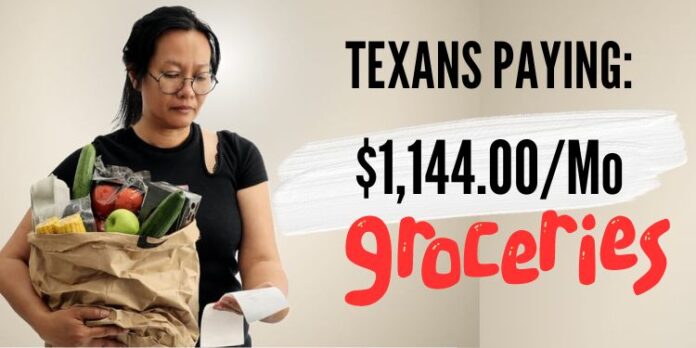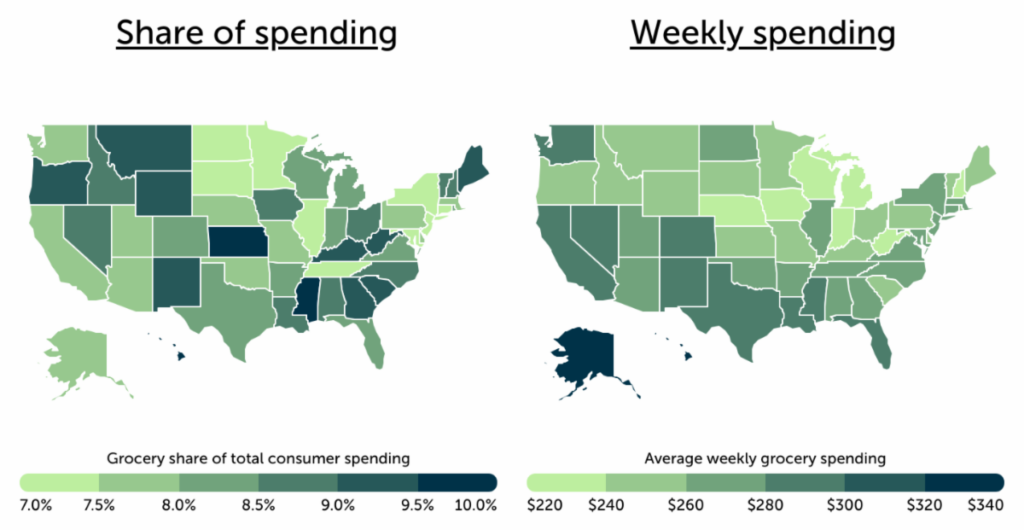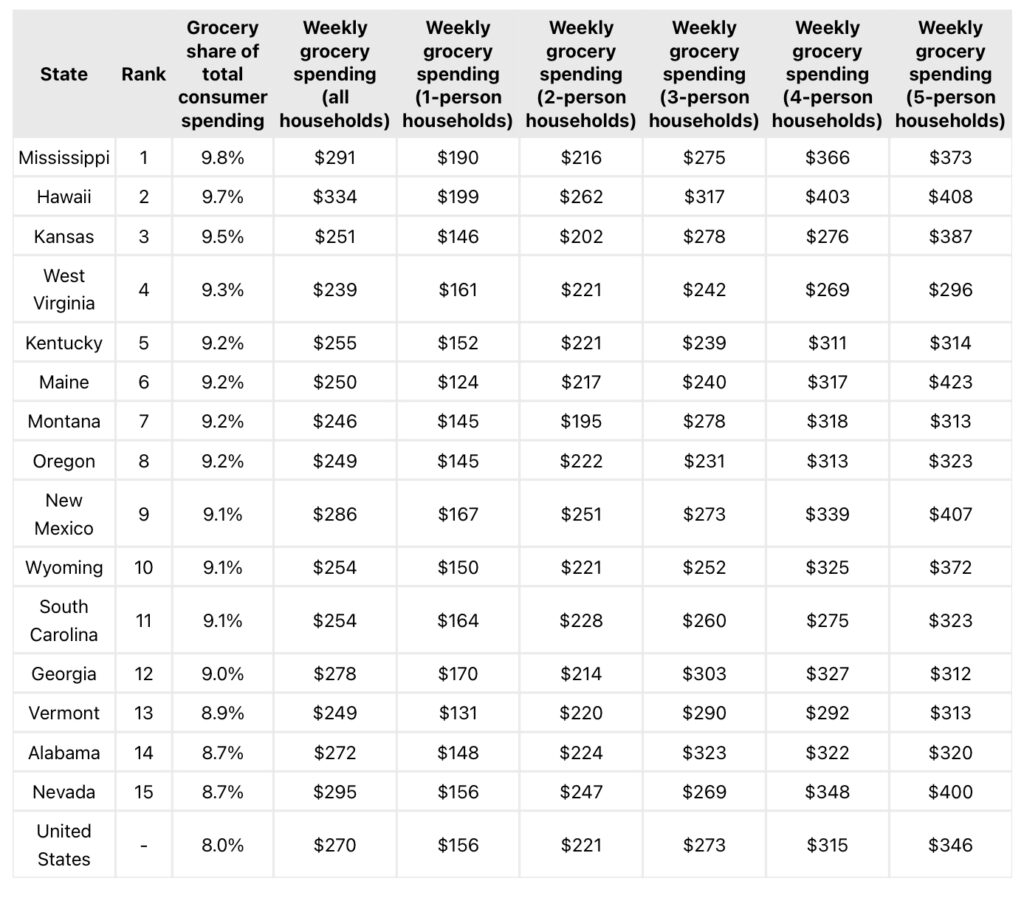Overall, grocery prices are up nearly 25% since the onset of the COVID-19 pandemic, though certain items have seen even more significant upticks. This upward trend in food costs is particularly concerning for families on tight budgets, as food expenses represent a non-negotiable necessity.
Groceries account for the largest share of individual spending in a number of states where income is relatively low, or where grocery prices are especially high. However, even in regions where grocery spending constitutes a smaller portion of income, consumers still find themselves grappling with significant weekly food bills. In 37 states, consumers report weekly household grocery expenditures exceeding $250 on average.
Researchers calculated the share of total consumer spending allocated to groceries for each state, then ranked states accordingly. The full report also includes a complete breakdown of price increases for nearly 40 popular grocery store items since March 2020.
Here are the key takeaways from the report for Texas:
- The average Texas household spends $286 on groceries each week.
- On average, grocery spending represents 8.2% of Texas residents’ total consumer spending.
- Overall, residents of Texas are spending a little bit more on groceries than the national average.
Here is a link to the complete results of the analysis with data on all 50 U.S. states, as well as price changes for the most popular grocery store items. And here is a snapshot of the data table included in the full report, looking at the 15 states where residents spend the most on groceries:







